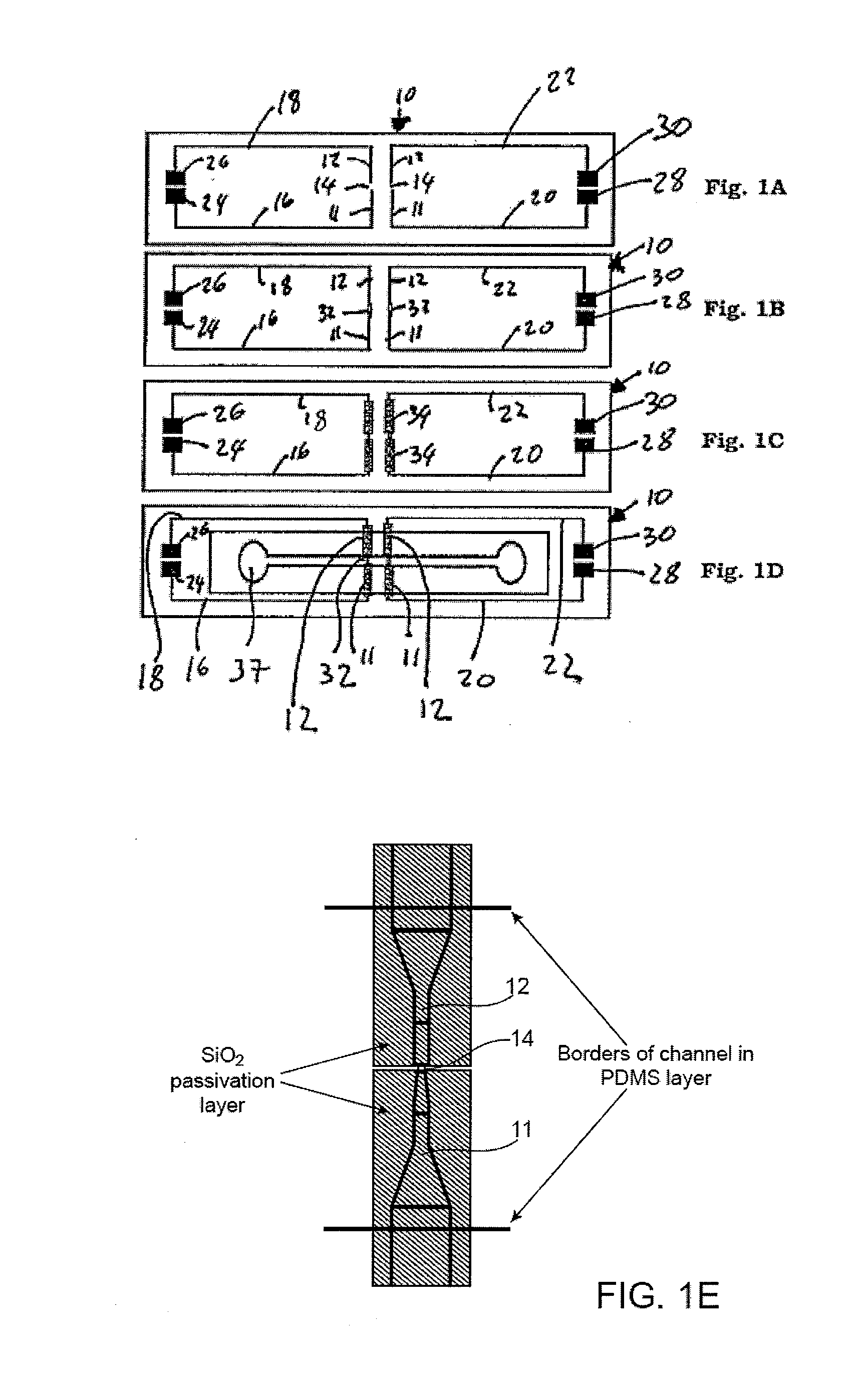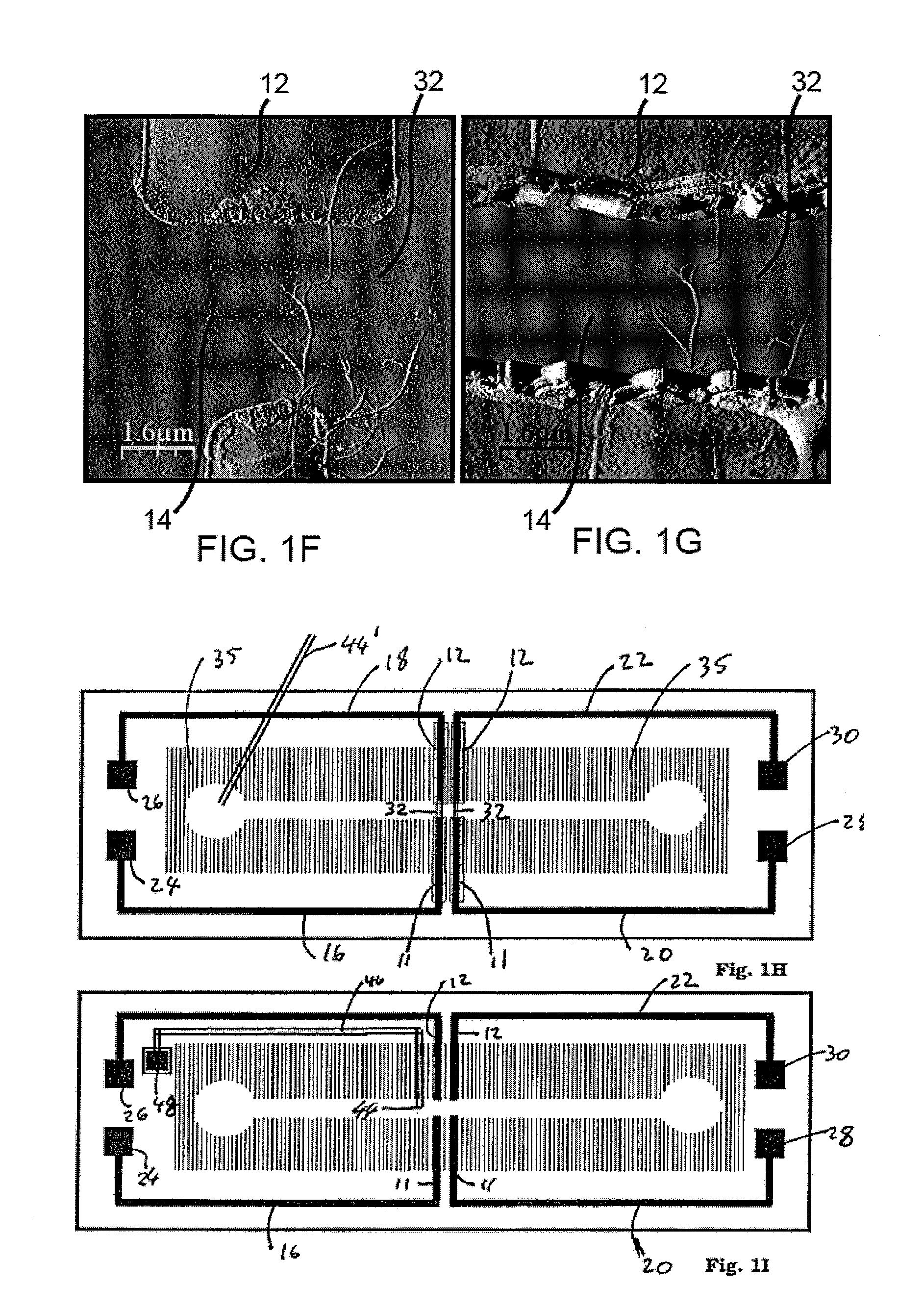Apparatus and method for detecting one or more analytes
a technology of apparatus and analytes, applied in the direction of instruments, superimposed coating processes, material impedance, etc., can solve the problem that their sensitivity still leaves scope for improvement, and achieve the effect of reliably detecting even lower concentrations of analytes and high sensitivity
- Summary
- Abstract
- Description
- Claims
- Application Information
AI Technical Summary
Benefits of technology
Problems solved by technology
Method used
Image
Examples
Embodiment Construction
[0054]General Description of Detector Topographies and their Manufacture
[0055]Turning now to FIG. 1A there can be seen a substrate 10 which can, for example, consist of a material selected from the group comprising glass, polyimide, silicon / silicon oxide, quartz and silicon nitride. In the present case the substrate 10 consists of an insulating silicon dioxide layer of 500 nm thickness which is an insulator on an n+-type substrate of crystalline Si with a resistivity of 1 Ohm / cm2 and of 500 μm thickness.
[0056]It should be noted that reference in the specification to silicon oxide means SiOx, where x can have values between 1 and 2 and signifies a non-stoichiometric oxide. However, SiO2, i.e. Silicon dioxide, is a perfectly viable and extremely useful silicon oxide for the purposes of the present invention, both as an insulating layer on a conductive silicon substrate and as a passivation layer.
[0057]Two pairs of first and second electrodes 11 and 12 of, in this case, platinum are de...
PUM
| Property | Measurement | Unit |
|---|---|---|
| Time | aaaaa | aaaaa |
| Nanoscale particle size | aaaaa | aaaaa |
| Nanoscale particle size | aaaaa | aaaaa |
Abstract
Description
Claims
Application Information
 Login to View More
Login to View More - R&D
- Intellectual Property
- Life Sciences
- Materials
- Tech Scout
- Unparalleled Data Quality
- Higher Quality Content
- 60% Fewer Hallucinations
Browse by: Latest US Patents, China's latest patents, Technical Efficacy Thesaurus, Application Domain, Technology Topic, Popular Technical Reports.
© 2025 PatSnap. All rights reserved.Legal|Privacy policy|Modern Slavery Act Transparency Statement|Sitemap|About US| Contact US: help@patsnap.com



